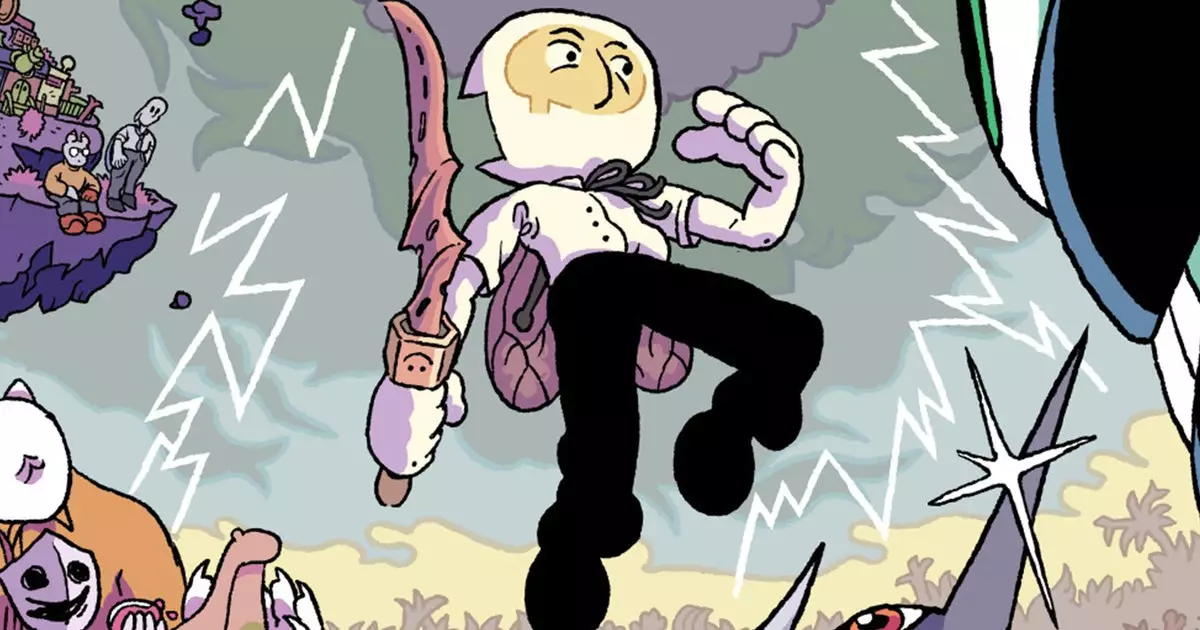In the crowded universe of indie gaming, innovations often feel like rare gems—bright but fleeting. Yet, Blanksword defies expectations by confidently blending genres that traditionally seem incompatible. Here lies a game that isn’t just trying to be unique for the sake of it but genuinely seeks to redefine the boundaries of what an RPG can be. It combines the intriguing mechanics of roguelike gameplay with narrative depth and atmospheric art rooted in outsider art aesthetics. Such a hybrid, at first glance, might seem questionable or even misguided—yet Blanksword turns this skepticism into curiosity with a compelling execution. Its audacious cross-genre approach not only sets it apart but invites players to reconsider their assumptions about what makes an engaging indie RPG.
Unique Narrative and Setting: Exploring the Depth of a Fractured Mind
At its core, Blanksword chronicles the odyssey of an angel known as Blank, a character whose trauma and amnesia unravel deep philosophical questions about identity and consciousness. Stabbed in the head, with a destroyed brain and no memories of his past, this protagonist embodies vulnerability and resilience. His journey across disjointed islands overseen by the whimsical yet ominous “Literally God” hints at a layered storytelling approach that defies conventional fantasy tropes. The narrative depth is further enriched by the protagonist’s ability to insert different “Angel Brain Parts”—each restoring specific powers and traits—effectively serving as a physical manifestation of internal conflict and psychological reconstruction. This mechanic cleverly parallels themes of mental healing and the fragmentary nature of self, elevating the game from mere exploration into a meditation on identity.
Innovative Gameplay Mechanics: The Fusion of Roguelike and RPG Elements
One of the most striking aspects of Blanksword is its inventive approach to gameplay mechanics. The turn-based combat system complements a dynamic skill acquisition process, where players amass hundreds of moves and equipment options over multiple runs. This “pick-up-and-try” style encourages experimentation and strategic planning amidst the chaos of procedural generation. The addition of the Brain Parts system adds another layer of variability—allowing players to customize their playstyle or adapt to evolving challenges. The limited use of these parts ensures tactical decision-making remains paramount. The roguelike aspect means no two runs are alike, fostering replayability and mastery of game mechanics that many players seek. Integrating these features within a narrative-rich universe results in an experience that feels both unpredictable and deeply personal.
Aesthetics and Artistic Vision: From Outsider Art to Mainstream Appeal
Blanksword’s visual presentation is notable for its art style, heavily influenced by outsider and folk art traditions. Mortis Ghost, creator of OFF, lends his signature style to the project—delivering a haunting, mesmerizing aesthetic that complements its enigmatic story. The game’s visuals do not rely on hyper-realism but instead emphasize raw, expressive images that evoke emotion and curiosity. This artistic choice supports the game’s themes of memory, identity, and psychological fragmentation. It’s a deliberate departure from mainstream aesthetic norms, appealing to players who appreciate outsider art’s honesty and emotional resonance. Such artistic direction helps foster a distinctive identity, making the game more memorable and emotionally impactful—an essential trait for a title striving for cult classic status.
Potential and Challenges: The Road to Realization
While Blanksword currently exists as a promising concept backed by a Kickstarter campaign and a playable demo, the journey toward full release remains uncertain. The game’s estimated launch window of 2027 hints at an ambitious scope that requires substantial funding and development time. The allure of this hybrid project lies in its potential to attract a dedicated niche audience—those craving innovative mechanics paired with meaningful storytelling. However, the risk is inherent; blending diverse genres and artistic styles demands meticulous design, which could challenge even experienced developers. Nevertheless, the game’s unique identity and the reputation of those involved—particularly Mortis Ghost—offer hope that Blanksword could become a standout success story. If the community and backers rally behind it, the title might very well carve out a niche in indie gaming history, challenging the conventions of genre and artistic expression alike.
—
This exploration reveals that Blanksword isn’t merely another indie RPG; it’s a bold experiment in storytelling, aesthetics, and gameplay that dares to challenge players’ expectations. Its success will hinge on unwavering support, but its innovative spirit already sets it apart as a potential trailblazer in the evolving landscape of independent games.


Leave a Reply